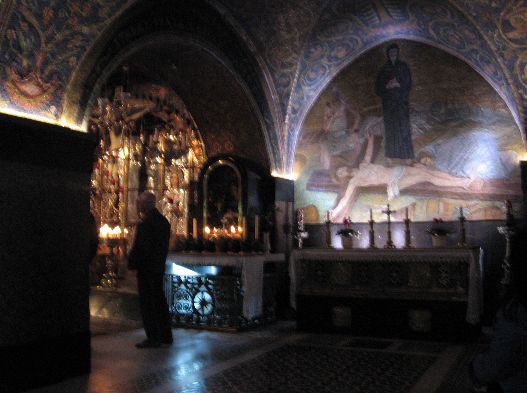I was born in 1970, so my understanding of the Catholic Church before that comes from various media and talking with people from that time. However, I think it can be said that the average Catholic in the U.S. in the early and mid-20th century followed the basic precepts laid down by the Church authority and dutifully attended church on Sundays and Holy Days of Obligation. The Baltimore Catechism provided a simple and straightforward teaching that explained the basic dogmatic and moral teachings. Vocations tended to be strong and plentiful
At some point, however, it seems these basic structures collapsed. It seems to me that the most serious collapse involved the first generation to grow up with television. If Bobbie was born in 1945 and his family got at TV in 1950, then Bobbie grew up with TV for all intents and purposes. He was 20 in 1965 – the beginnings of rebellion as more of a norm than an exception among youth. There were many older people who were also spurring on such a collapse, but I think they were in the minority overall.
What kept the Church going? As the collapse seemed to engulf many during the days of mass rejection of the teaching of Humanae Vitae, something new was occurring – the Catholic Charismatic Movement. In the 1970s, it spread like wildfire, growing from 10s to 100s attending meetings in a short time. The tremendous zeal it spawned fell on good soil, but also plenty of rocky soil. By the 1980s the results were mixed, but they had produced such good fruits as Franciscan University of Steubenville and (to some degree) EWTN. It should be remembered that Mother Angelica was very pro-Medjugorje and pro-Charismatic Movement in the 1980s and the early 1990s.
As the tremendous spread and zeal of the Charismatic movement began to cool in the 1980s, a new trend was building – alleged apparitions in Medjugorje. As a priest, I make no official official declaration for or against these but instead look to the day when there is an official position, but I cannot help notice the tremendous effects (which includes effects on yours truly) that these events had. We cannot ignore Medjugorje as a major “trend” in the Catholic Church in the U.S. in the 1980s, and a trend that had many positive effects. As mentioned previously, EWTN had many pro-Medjugorje programs on for a number of years. Pope John Paul II gained some ground in stabilizing the Church and ending (or at least trying to end) times of “experimentation.” He was supportive of the Charismatic movement and other young movements and started to hold the now famous World Youth Days which would have tremendous impact in the 1990s.
In the 1990s, there is a glut of alleged apparitions, and devotions such as Eucharistic Adoration and the Rosary start to make a comeback in part due to focus on the alleged apparitions. Such organizations as the “Marian Movement of Priests” become, in some cases, meetings made up entirely of lay people, but powerful places of prayer and solidarity. Charismatic Catholics and more traditional Catholics find greater solidarity in such groups and team up in ministries. The pro-life movement has been building, but it starts to take on new and more focused approaches in part due to Pope John Paul II’s Evangelium Vitae. Vocations that had been declining so badly for years now start to see some increase, particularly among dioceses and religious communities that are faithful to the Magisterium.
The first decade of this century showed something of a decline in the Charismatic movement, or at least in the form it had in the 1970s and 1980s. Now the term “Praise and Worship” seems to include a wide variety of youth gatherings which may include traditional devotions and the latest praise and worship songs from both Catholic and Protestant sources, but less raising of hands and speaking in tongues. The “energy” in the Church is among the devout young, and they include a larger “traditional” element but also a larger “modern worship” element, which is now bridged by some young people who like both. They are very pro-life and pro-family, even if the culture around them is very pro-neither. Vocations are taking off, but not enough to replace the tremendous numbers of priests and religious that are no longer in active ministry or have died. Still, vocations in some countries are so plentiful that we will see more priests and religious coming to help out with the shortages.
These are some reflections I’ve had recently.


